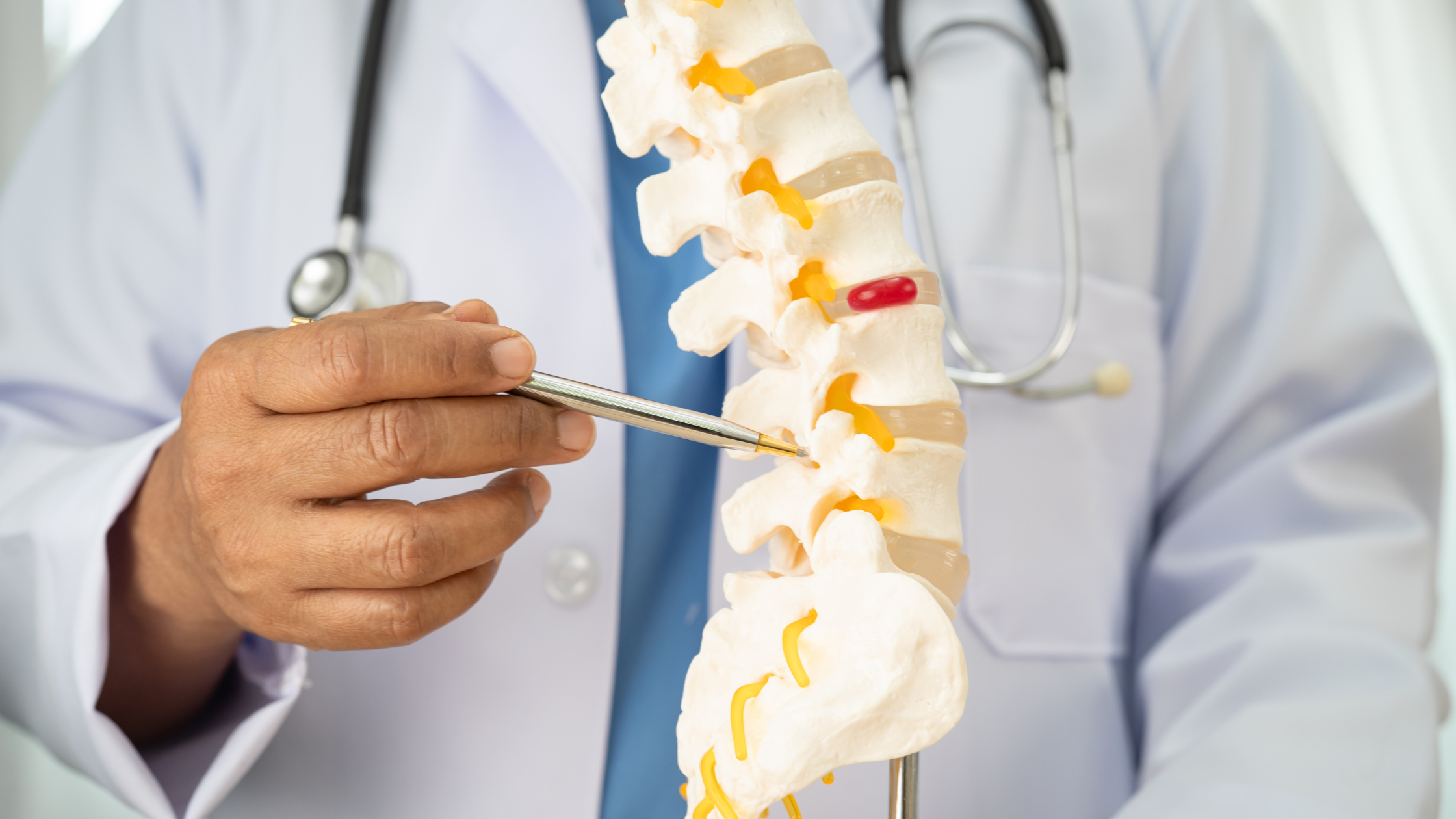Degenerative disc disease (DDD) is one of the most common causes of chronic back pain, often developing with age as the spinal discs lose hydration, elasticity, and structural integrity. While the name suggests a “disease,” it is more accurately a condition that reflects natural wear and tear of the spine over time. For some people, DDD leads to persistent pain, stiffness, and limited mobility that significantly affect quality of life.
Traditionally, treatment for degenerative disc disease has focused on symptom management. Conservative options like physical therapy, anti-inflammatory medications, and lifestyle adjustments are often the first line of care. When pain persists, more invasive interventions such as steroid injections, nerve ablation, or even spinal fusion surgery may be considered.
However, in recent years, stem cell therapy has emerged as a promising regenerative medicine option that aims to address the root cause of disc degeneration rather than just masking the symptoms. Instead of focusing solely on pain relief, stem cell therapy holds potential for disc repair and restoration.
Understanding Degenerative Disc Disease
The spinal column is made up of vertebrae separated by intervertebral discs, which act as shock absorbers and allow flexibility. Each disc has two parts:
- Nucleus pulposus – the gel-like center that provides cushioning.
- Annulus fibrosus – the tough outer layer that holds the nucleus in place.
With age or repetitive stress, discs lose water content and become less resilient. This process can lead to:
- Disc thinning and loss of height
- Small tears in the annulus fibrosus
- Bulging or herniated discs
- Inflammation and nerve compression
Symptoms vary but may include localized back pain, radiating leg pain (sciatica), stiffness, and decreased mobility.
What Is Stem Cell Therapy?
Stem cell therapy is a form of regenerative medicine that uses the body’s own healing cells to repair damaged tissues. Stem cells are unique because they have the ability to:
- Self-renew – make more copies of themselves.
- Differentiate – transform into specialized cells, such as bone, cartilage, or muscle cells.
In the context of degenerative disc disease, stem cells are often harvested from a patient’s bone marrow or adipose (fat) tissue. Once collected, the cells are concentrated and then injected into the affected disc under imaging guidance.
The goal is to stimulate repair by:
- Reducing inflammation
- Supporting regeneration of disc tissue
- Improving hydration and disc function
- Slowing or potentially reversing degeneration
Current Research and Evidence
Research into stem cell therapy for spinal disc conditions is still evolving, but early results are encouraging. Several studies have shown that patients experience:
- Reduced pain and improved mobility compared to baseline
- Disc height stabilization in some cases, suggesting slowed degeneration
- Decreased need for surgery when used as part of a comprehensive pain management plan
For example, clinical trials have reported improvements in both pain scores and function after mesenchymal stem cell (MSC) injections. While not all patients respond, and long-term outcomes are still being studied, these findings suggest that stem cell therapy could become a viable alternative or adjunct to surgery.
Benefits of Stem Cell Therapy for DDD
Stem cell therapy offers several potential advantages over traditional treatments:
- Minimally Invasive – The procedure involves a simple injection rather than major surgery, reducing recovery time.
- Natural Healing Approach – Uses the patient’s own cells, lowering the risk of rejection or complications.
- Pain Relief with Regeneration – Instead of just numbing pain, it aims to repair damaged disc tissue.
- Reduced Need for Surgery – May delay or prevent invasive procedures like spinal fusion.
- Shorter Downtime – Patients often resume normal activities sooner than after surgery.
Limitations and Considerations
Despite its promise, stem cell therapy is not a guaranteed cure and has limitations:
- Variability in Outcomes – Not every patient experiences significant improvement.
- Disease Severity Matters – Stem cell therapy may be more effective in early to moderate stages of degeneration than in advanced cases.
- Cost and Insurance – Many insurance providers do not yet cover stem cell treatments, making them an out-of-pocket expense.
- Ongoing Research – Long-term effectiveness and standardized treatment protocols are still under study.
- Not for Everyone – Patients with severe disc collapse or nerve compression may still require surgical intervention.
Who Might Be a Candidate?
Ideal candidates for stem cell therapy generally include individuals who:
- Have chronic back pain from mild to moderate degenerative disc disease
- Have not found relief with conservative treatments
- Are not ready or do not wish to undergo major spine surgery
- Are in overall good health without uncontrolled medical conditions
A thorough evaluation with imaging studies and consultation with a pain management or regenerative medicine specialist is necessary to determine suitability.
The Future of Stem Cell Therapy in Spine Care
As research advances, stem cell therapy continues to hold promise as a groundbreaking option in spine care. Scientists are exploring:
- Combination therapies – pairing stem cells with growth factors or platelet-rich plasma (PRP) to enhance outcomes.
- Improved delivery methods – such as biomaterial scaffolds that provide structural support for disc regeneration.
- Allogeneic stem cells – donor-derived cells that may make treatment more widely available.
While more long-term clinical trials are needed, the trend points toward stem cell therapy becoming a standard option in the treatment of degenerative disc disease.
Final Thoughts
Degenerative disc disease can take a heavy toll on daily life, limiting mobility and causing ongoing pain. Traditional treatments often provide temporary relief without addressing the underlying cause. Stem cell therapy represents a paradigm shift, focusing on repair and regeneration rather than symptom management alone.
Although still in its early stages, stem cell therapy has shown great potential in reducing pain, improving function, and possibly slowing the progression of disc degeneration. Patients considering this treatment should consult with a qualified specialist to discuss whether they are good candidates and to weigh the potential benefits against the limitations.
Stem cell therapy may not yet be a universal solution, but for many individuals, it offers renewed hope for a future with less pain and greater mobility.


